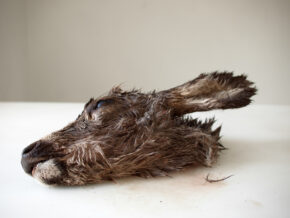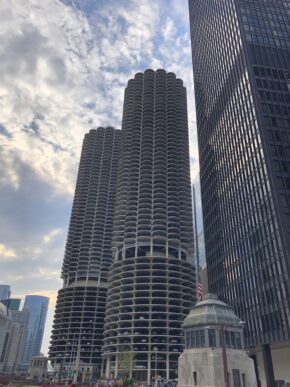 The “War/Photography” exhibition at the Museum of Fine Arts, Houston lured me into town. When I heard that Anne Tucker, the long-time chief curator and power broker, had spent the better part of ten years on the project, I figured that was enough of a reason to head Southeast. (On Southwest, ironically.) Political capital is scarce in this world, and I figured if she’d gone all in, the result would be worth my time. And it was.
The “War/Photography” exhibition at the Museum of Fine Arts, Houston lured me into town. When I heard that Anne Tucker, the long-time chief curator and power broker, had spent the better part of ten years on the project, I figured that was enough of a reason to head Southeast. (On Southwest, ironically.) Political capital is scarce in this world, and I figured if she’d gone all in, the result would be worth my time. And it was.
As I entered the spacious gallery on a breezy Tuesday afternoon, my attention was pulled from the exhibition map by a strange clomp, clomp, clomping sound. I looked up, and saw a scruffy, messy college kid in a ratty t-shirt and gym-shorts. His flip-flops were slapping the ground like an obnoxious metronome. Rarely have I seen someone dressed like that in a fancy museum, but rarely have I been in Texas.
The show was daunting and grand, with galleries off-shooting a main hall, like capillaries stemming off a blood-filled artery. Pump, pump, pump. It took forever to make it out of the first big room, dominated by historical and contemporary journalism, and a multi-image panel of the second plane striking a Twin Tower, by Robert Clark. He got to the roof of his apartment building just in time, after seeing the first crash on television.
Other highlights: Roger Fenton’s horse drawn photo van from the Crimean War in 1855, and Ashley Gilbertson’s photo of a soldier watching George Bush’s apology for Abu Ghraib on TV. When I finally looked down said hall, it seemed to be 100 yards long, like a football field in a Texas High School stadium. (Side note: I once flew into Dallas and saw two full-sized High School stadiums on opposite sides of the same street. Different school districts.)
Calculating the distance, my spirit was crushed. So much violence, so little time. Three hours, all told, I spent in the custom-built-hanger space, filled with almost five hundred photographs that presented as categorical a photographic depiction of War as has likely ever been assembled. In the end, the nice Vietnamese guards insisted I had to leave, as the museum was closing. (Actually, they subtly suggested it, and as I didn’t get the hint, they got a bossy colleague to shoo me out the door.)
In the span of those hours, I slowly looked and contemplated. Death and destruction, bombs and ships, planes and slingshots, guns and swords, frightened boys and casualties of War. I thought of all the fat cats that designed these conflicts, plucking hicks from the sticks to use as cannon fodder to advance their greedy ambitions. There were decomposing corpses, burned-off faces, miserable rape victims, and even the goofy Diane Arbus dude in the silly straw hat. Ultimately, it was a joy to witness such sorrow, if that makes sense.
The show clearly lacked an agenda. No obvious “War Should Be Abolished” message here. If anything, it made me grateful to be an American, as we haven’t had to live with the horrific repercussions of grinding conventional War on our shores since the 19th Century. (Excepting Pearl Harbor, I suppose.) Too many others have.
As I crossed the threshold into the first side-gallery, I found myself lamenting the absolute silence in the room. War is the messiest, most sensory overloaded phenomenon humans have created. (See our previously published Ben Lowy interview for confirmation.) The show was so traditional in construction, created to highlight photos and wall text. I craved something to break it up.
No sooner had the thought popped into my head than sirens wailed about the room. Ah, piped in sound, I thought. Now we’re getting somewhere. Then I realized it was just an ambulance going by on the street below; a happy accident. In a more Art World context, (as opposed to Photo-World,) I noted, such things would be built into the experience. Not better or worse, just different. (Co-incidentally, a subsequent visit to the Menil Collection provided the perfect Art World counterpart. I’ll tell you about that one next week.)
As I walked in and out of galleries, back and forth, I appreciated that they were well-attended. People looked like average citizens, out and about, educating themselves. Suddenly, I heard the clomp clomp clomp again, and saw the kid who entered with me. I was impressed, as we’d been there an hour and forty-five minutes by then. I couldn’t help but query him, and learned he was a photography student, an intern at HCP, and was biding his time because he couldn’t afford see the show twice. (There was a surcharge on top of regular admission.)
When I asked him what impact the show was having on him, he grew silent, contemplative. I waited for him to deliver a reply, until I realized it wasn’t forthcoming. He just didn’t know. So I let him off the hook, politely. After all, he didn’t turn up expecting to be interviewed by a pushy fake-journalist with a bushy goatee.
I’ll spare you too many more details, because I was fortunate to interview one of the co-curators, Will Michels, and we’ll bring you that piece shortly. (Natalie Zelt was the third curator behind the project.) Will delved into the specifics of the decade-long process, so I’d rather not repeat. But one point I found incredibly salient was that the show was designed with two audiences in mind: museum goers, and Military viewers. (This being Texas, and not the coasts.)
That’s why it seemed to lack a typical liberal agenda. Personally, I don’t know anyone who served in Iraq or Afghanistan. It’s easy to demonize the evils of war, lacking intimate knowledge of the experience. What do I know about the pride of proper execution, a job well done? Like it or not, violence is embedded into our human operating system, and wishing it away comes to naught.
The show closed in the beginning of February, so this review comes to late for you to check it out. Thankfully, a condensed version of exhibition travels to the Annenberg Center in LA, the Corcoran Gallery of Art in DC, and the Brooklyn Museum as well. If you can, go see it. It’s worth the investment of time, money and precious brain space. You’ll probably feel bad for a while, but in a good kind of way.


7 Comments
Thanks Jonathan. This sounds like a great show of war photography. Kudos to curator Anne Tucker for the years it took to bring it all together.
Sorry I missed it in Houston, but I’ll try to catch it in LA or Brooklyn.
Just back from Houston myself but, couldn’t fit it in to my schedule. I practically grew up at the Houston Museum of Modern Art. It’s where I was first introduced to the work of Robert Frank.
Correction: Houston Museum of Fine Arts.
“Then I realized it was just an ambulance going by on the street below; a happy accident.”
Not for whoever was in the ambulance. It’s interesting how this bit of thoughtlessness is reflected in your summation of the exhibit as well. Your reaction to images of “decomposing corpses, burned-off faces [and] miserable rape victims” is that it made you “grateful” that it was happening to other people in other countries instead of your own (you do realize that it’s your country that’s causing the bulk of these atrocities, don’t you?). And you’re unable to form any moral stance on war because you don’t know anyone who’s served? Isn’t compassion one of the basic human elements that every artist should possess?
A good piece, Jonathan. And a tough assignment. After three visits, I found myself still wandering, perhaps one of the effects war ultimately has on us: a sense of dislocation/estrangement. The exhibition makes a really solid case for the inclusion of the high and the low/ insider versus outsider images and demonstrates how they complement each other.
I totally thought this post was about the http://www.texasphotoroundup.com. Ha! Well, regardless, I’m super excited to see Texas getting some love here. There’s a ton of talent and great photography all over our great big state!
Coincidentally, I address the confusion in tomorrow’s book review column.
Best wishes,
jb
Comments are closed for this article!